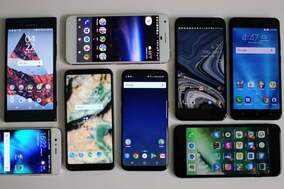The Case for the Call
Inspired by my last post’s gif and by a few recent client experiences, I want today to advocate for the phone.
For contract workers, freelancers, and anyone working remotely, email (and its more casual cousins, like Slack) are the queens of communications processes. Asking a quick Q, updating a far-flung project partner, onboarding a client: In all of these cases (and most others) it feels supremely efficient to send a quick email. Email lets you get stuff done when you’re in the midst of other work.
But sometimes that’s a problem. Email aids the multitasker, but its benefits are often perceived rather than real (research typically shows that the high mental cost of task-switching makesmultitasking pretty inefficient anyway).
At the same time, inbox scope creep is very real and a very real problem. It’s hard to hierarchize replies and responses to anything when everything—every query, question, and fyi—is piled on top of an already towering heap.
Meanwhile, the phone, also a tool of communication, seldom feels like an appealing alternative. In the email era, a call may feel a little intimidating. It’s more involved, and it’s more intimate, perhaps because it seems to require participants’ (almost) complete attention.
But a phone call conveys care, and—because it assumes an immediate response—helps aid prioritization. It can also keep projects running smoothly. A few years ago, I began integrating phone calls into my SOP where I’d typically send an email. It’s hard to gauge the impact on productivity, but I absolutely noticed a difference in my work. Getting on the phone to more regularly check in and troubleshoot helped partnerships feel real and invested.
Because of this, I’ve become an advocate for picking up the phone: It may be out of style, and it definitely feels more labor intensive, but that doesn’t mean it’s not time to bring it back.

